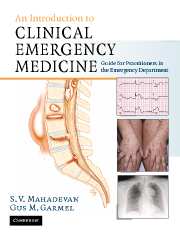Foreword
Published online by Cambridge University Press: 27 October 2009
Summary
Emergency medicine represents the unique combination of rapid data gathering, simultaneous prioritization, and constant multi-tasking in a time-constrained fish bowl – with all decisions subject to second-guessing by others. It is a patient complaint-oriented specialty in which stabilization based on anticipation supersedes lengthy differentials and diagnostic precision.
In light of these unique aspects and attributes of clinical practice, one would expect the textbook-based literature supporting this specialty to be uniquely written and reflective of its singular approach. This has rarely been the case, a fact that has puzzled me for almost 30 years. It is true that sequential prose does not accurately represent the parallel processing necessary to practice effective and efficient emergency medicine. Still, it would seem the ideas of priority diagnoses, stabilization, initial assessment, prioritized differential diagnosis, and the rest that follows could be delineated and emphasized within the limitations of the printed word. I am pleased and delighted to find and convey to the reader that this text succeeds in translating this untraditional emergency medicine approach into a textbook format.
This text, edited by two academicians, Swaminatha V. Mahadevan, MD and Gus M. Garmel, MD from one of the nation's premier academic institutions and leading health care organizations, fulfills what I have long believed is the correct and necessary pathway to understanding the approach and thought processes that drive clinical decision-making in emergency medicine.
- Type
- Chapter
- Information
- An Introduction to Clinical Emergency MedicineGuide for Practitioners in the Emergency Department, pp. xv - xviPublisher: Cambridge University PressPrint publication year: 2005

